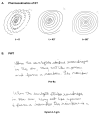Alcohol-Responsive Hyperkinetic Movement Disorders-a Mechanistic Hypothesis
- PMID: 33178485
- PMCID: PMC7597582
- DOI: 10.5334/tohm.560
Alcohol-Responsive Hyperkinetic Movement Disorders-a Mechanistic Hypothesis
Abstract
Patients with essential tremor, vocal tremor, torticollis, myoclonus-dystonia and posthypoxic myoclonus often benefit in a surprisingly rapid and robust manner from ingestion of a modest amount of alcohol (ethanol). Despite considerable investigation, the mechanism of ethanol's ability to produce this effect remains a mystery. In this paper, we review the pharmacology of ethanol and its analogue GHB (or sodium oxybate), summarize the published literature of alcohol-responsive hyperkinetic movement disorders, and demonstrate videos of patients we have treated over the last fifteen years with either an ethanol challenge or with chronic sodium oxybate therapy. We then propose a novel explanation for this phenomenon-namely, that ingestion of modest doses of ethanol (or sodium oxybate) normalizes the aberrant motor networks underling these disorders. We propose that alcohol and its analogues improve clinical symptoms and their physiologic correlate by restoring the normal firing pattern of the major outflow pathways of the cerebellum (the Purkinje cells and deep cerebellar nuclei), We present evidence to support this hypothesis in animal models and in affected patients, and suggest future investigations to test this model.
Keywords: GHB; alcohol; dystonia; myoclonus; sodium oxybate; tremor.
Copyright: © 2020 The Author(s).
Conflict of interest statement
The authors have no competing interests to declare.
Figures


Similar articles
-
Movement disorders and alcohol misuse.Addict Biol. 2006 Jun;11(2):117-25. doi: 10.1111/j.1369-1600.2006.00017.x. Addict Biol. 2006. PMID: 16800824 Review.
-
A pilot tolerability and efficacy trial of sodium oxybate in ethanol-responsive movement disorders.Mov Disord. 2005 Oct;20(10):1330-7. doi: 10.1002/mds.20605. Mov Disord. 2005. PMID: 15986420
-
A single-blind, open-label trial of sodium oxybate for myoclonus and essential tremor.Neurology. 2005 Dec 27;65(12):1967-9. Neurology. 2005. PMID: 16382538 Clinical Trial.
-
An open-label study of sodium oxybate in Spasmodic dysphonia.Laryngoscope. 2017 Jun;127(6):1402-1407. doi: 10.1002/lary.26381. Epub 2016 Nov 3. Laryngoscope. 2017. PMID: 27808415 Free PMC article. Clinical Trial.
-
Chapter 33: the history of movement disorders.Handb Clin Neurol. 2010;95:501-46. doi: 10.1016/S0072-9752(08)02133-7. Handb Clin Neurol. 2010. PMID: 19892136 Review.
Cited by
-
[Alcohol as a rescue treatment for essential tremor: too risky to recommend].Rev Neurol. 2022 Dec 16;75(12):387-388. doi: 10.33588/rn.7512.2022046. Rev Neurol. 2022. PMID: 36514206 Free PMC article. Spanish.
-
Cerebellar transcranial current stimulation - An intraindividual comparison of different techniques.Front Neurosci. 2022 Sep 15;16:987472. doi: 10.3389/fnins.2022.987472. eCollection 2022. Front Neurosci. 2022. PMID: 36188449 Free PMC article.
-
Testing for Alcohol Responsiveness in Familial Essential Tremor.Tremor Other Hyperkinet Mov (N Y). 2024 Jun 11;14:30. doi: 10.5334/tohm.923. eCollection 2024. Tremor Other Hyperkinet Mov (N Y). 2024. PMID: 38881692 Free PMC article.
-
Synaptic Dysfunction in Dystonia: Update From Experimental Models.Curr Neuropharmacol. 2023;21(11):2310-2322. doi: 10.2174/1570159X21666230718100156. Curr Neuropharmacol. 2023. PMID: 37464831 Free PMC article. Review.
-
Dystonias: Clinical Recognition and the Role of Additional Diagnostic Testing.Semin Neurol. 2023 Feb;43(1):17-34. doi: 10.1055/s-0043-1764292. Epub 2023 Mar 27. Semin Neurol. 2023. PMID: 36972613 Free PMC article.
References
Publication types
MeSH terms
Substances
Supplementary concepts
LinkOut - more resources
Full Text Sources
Medical

